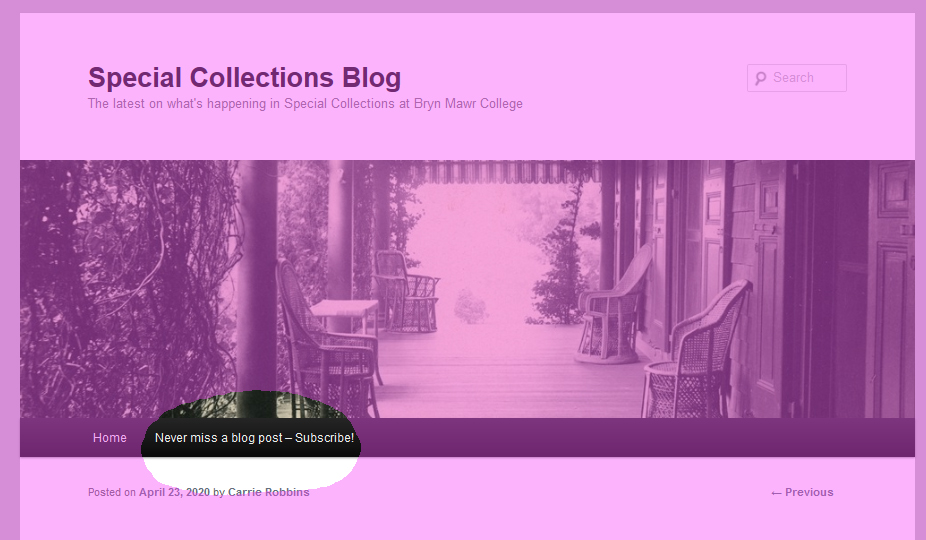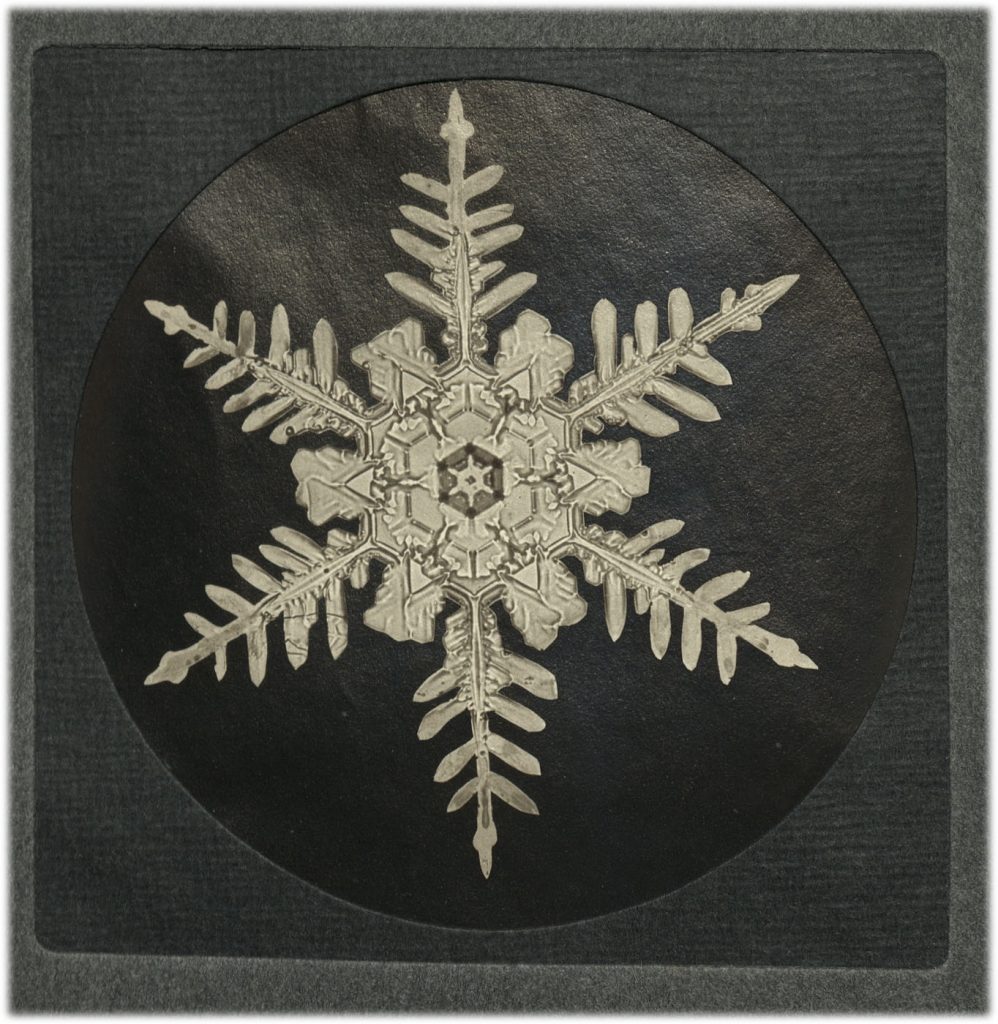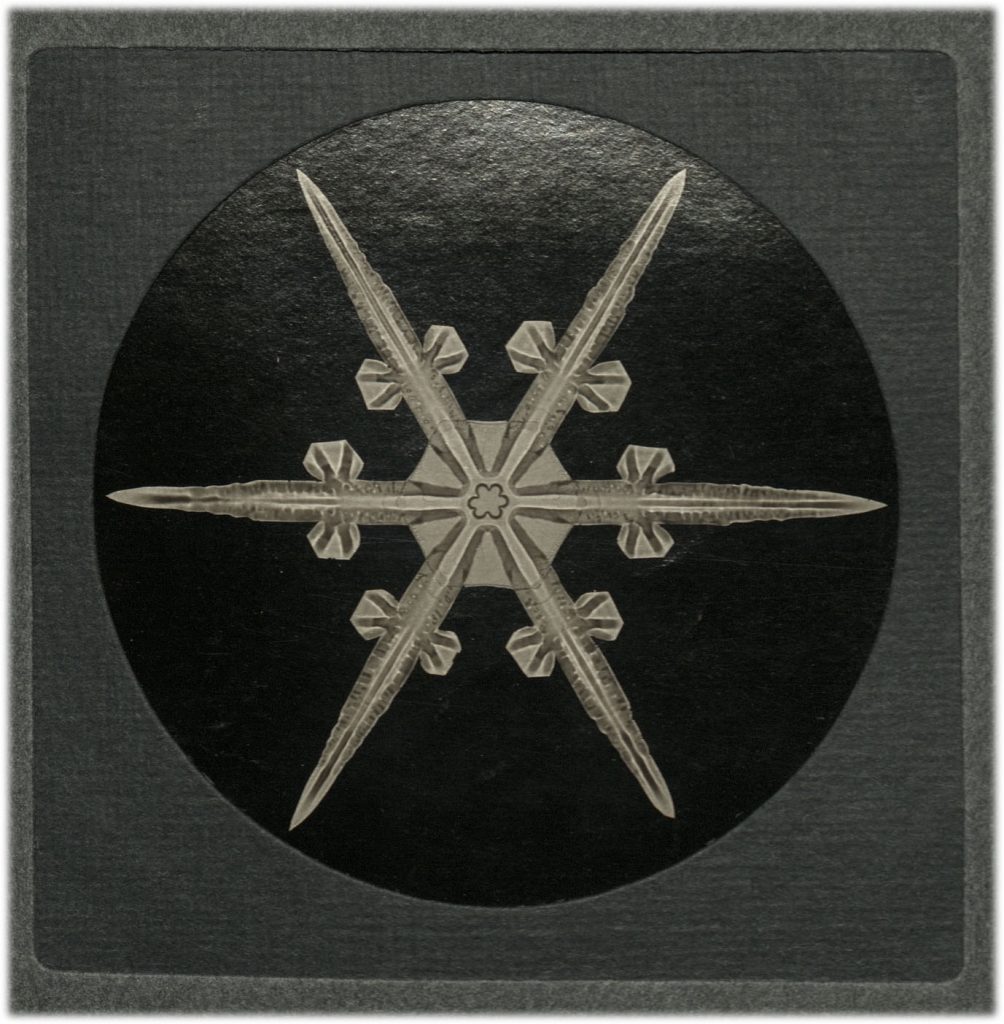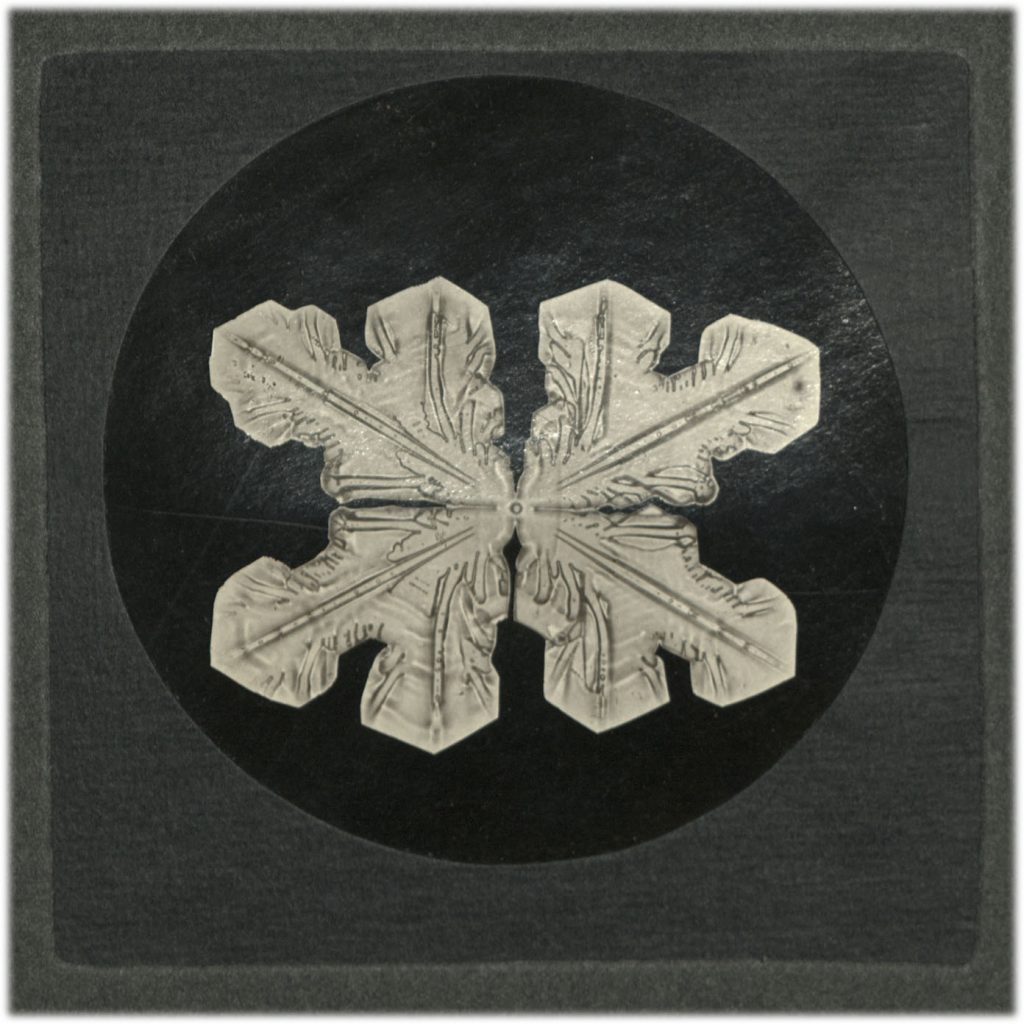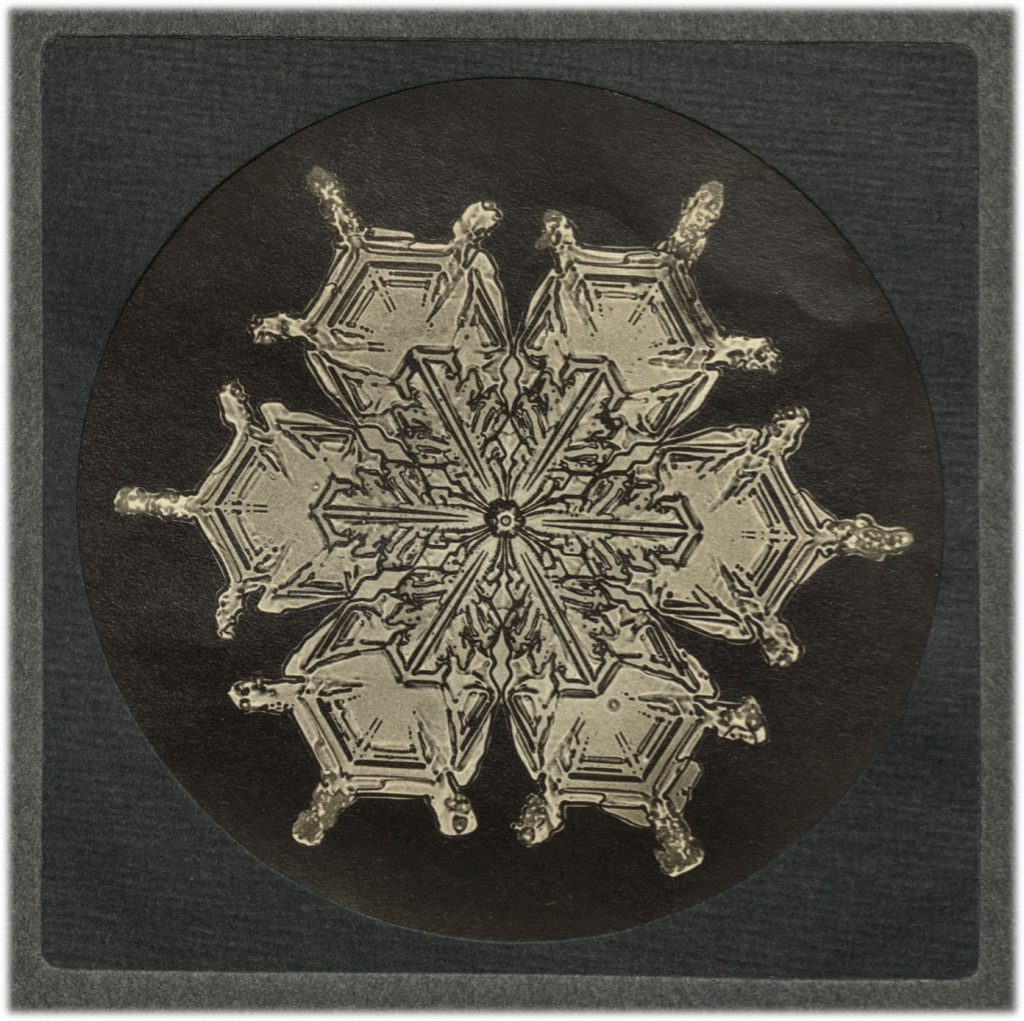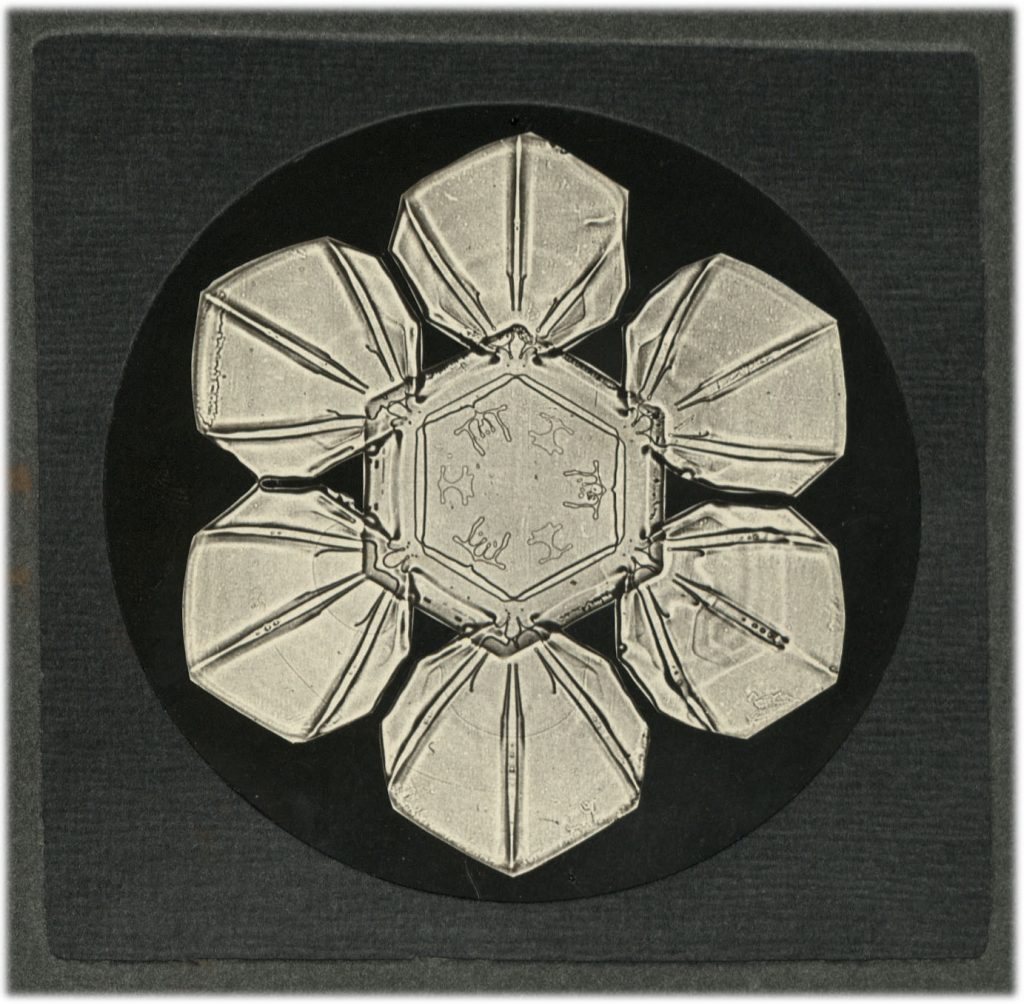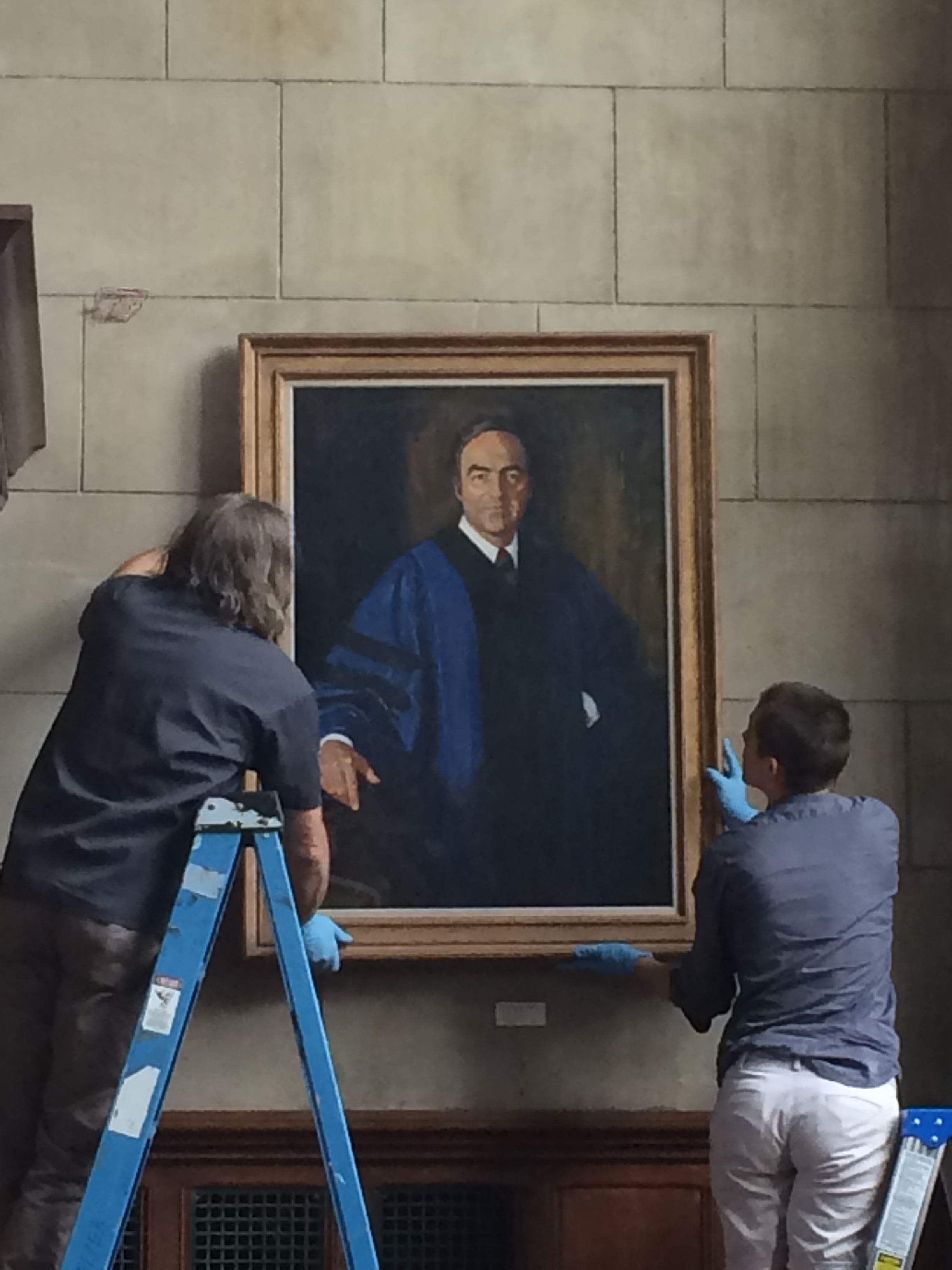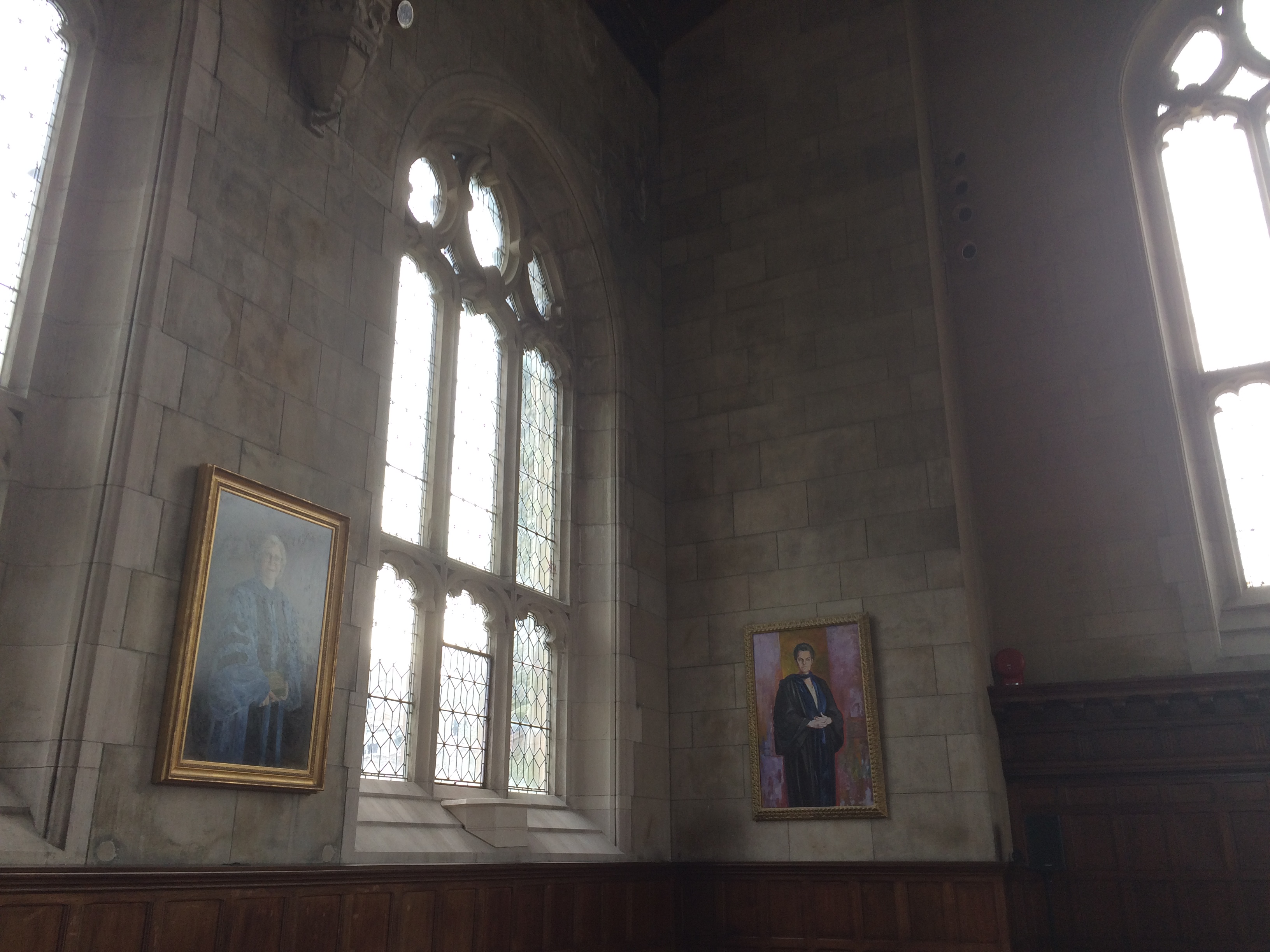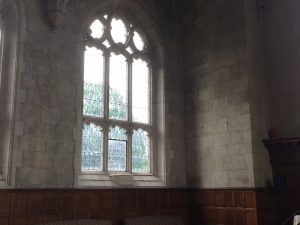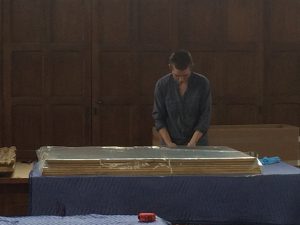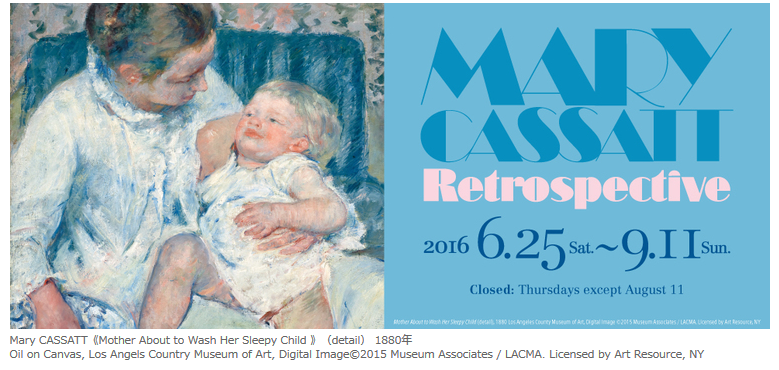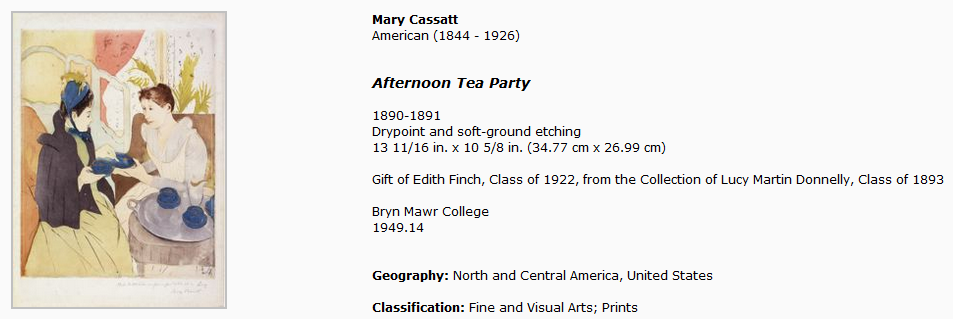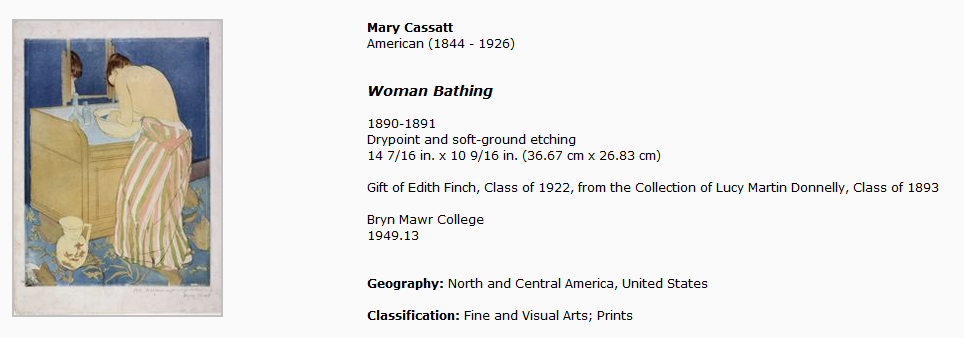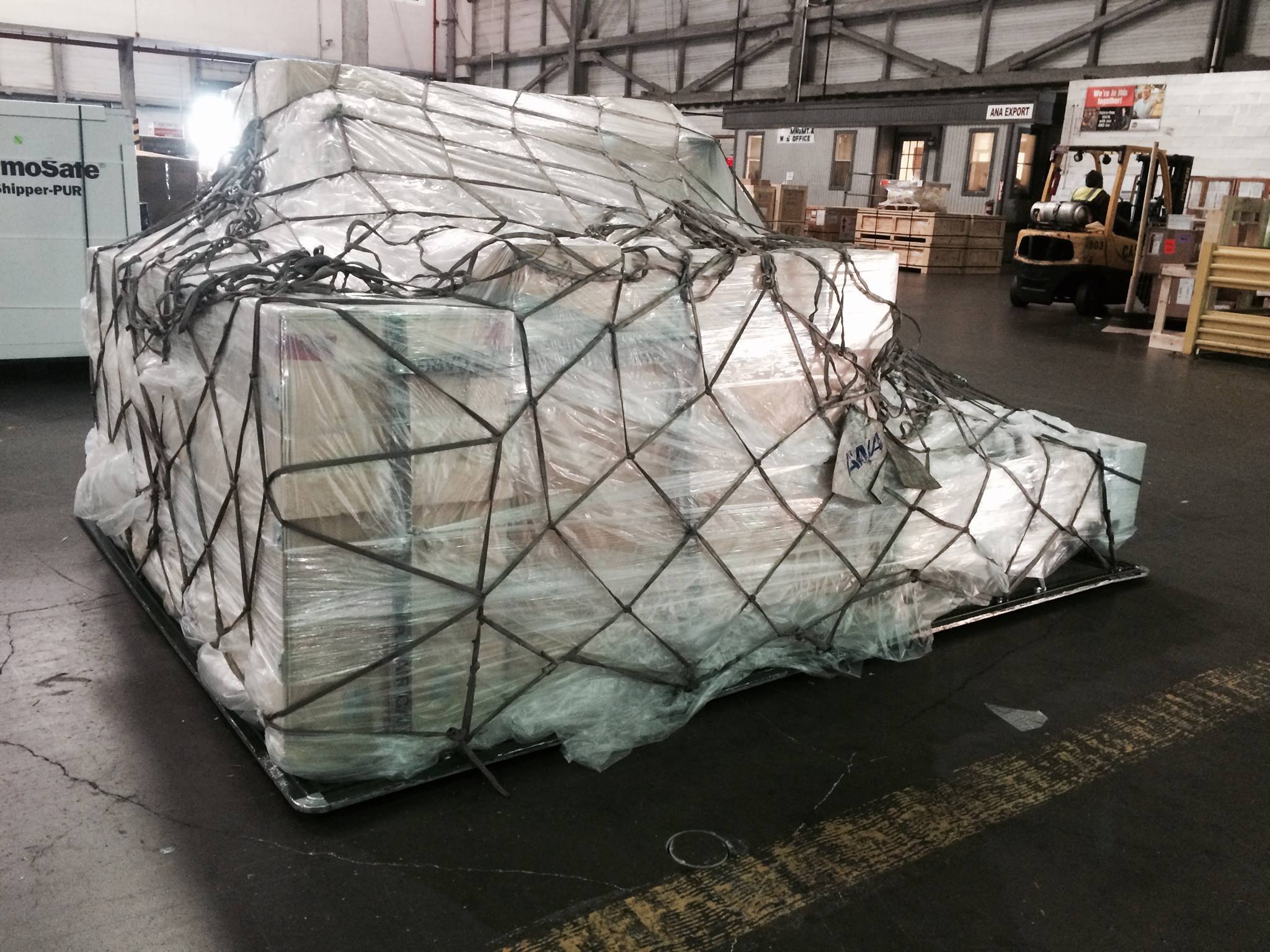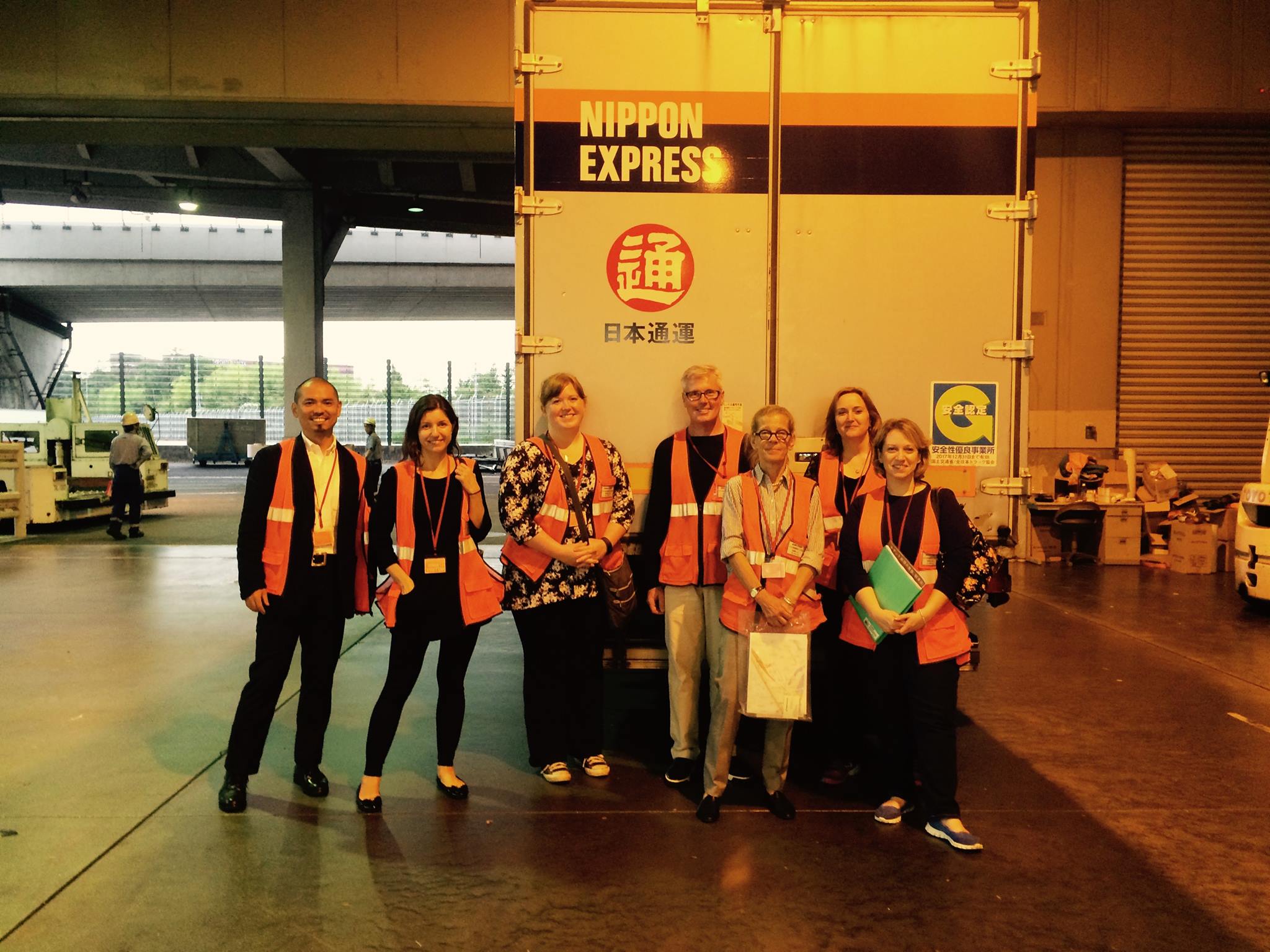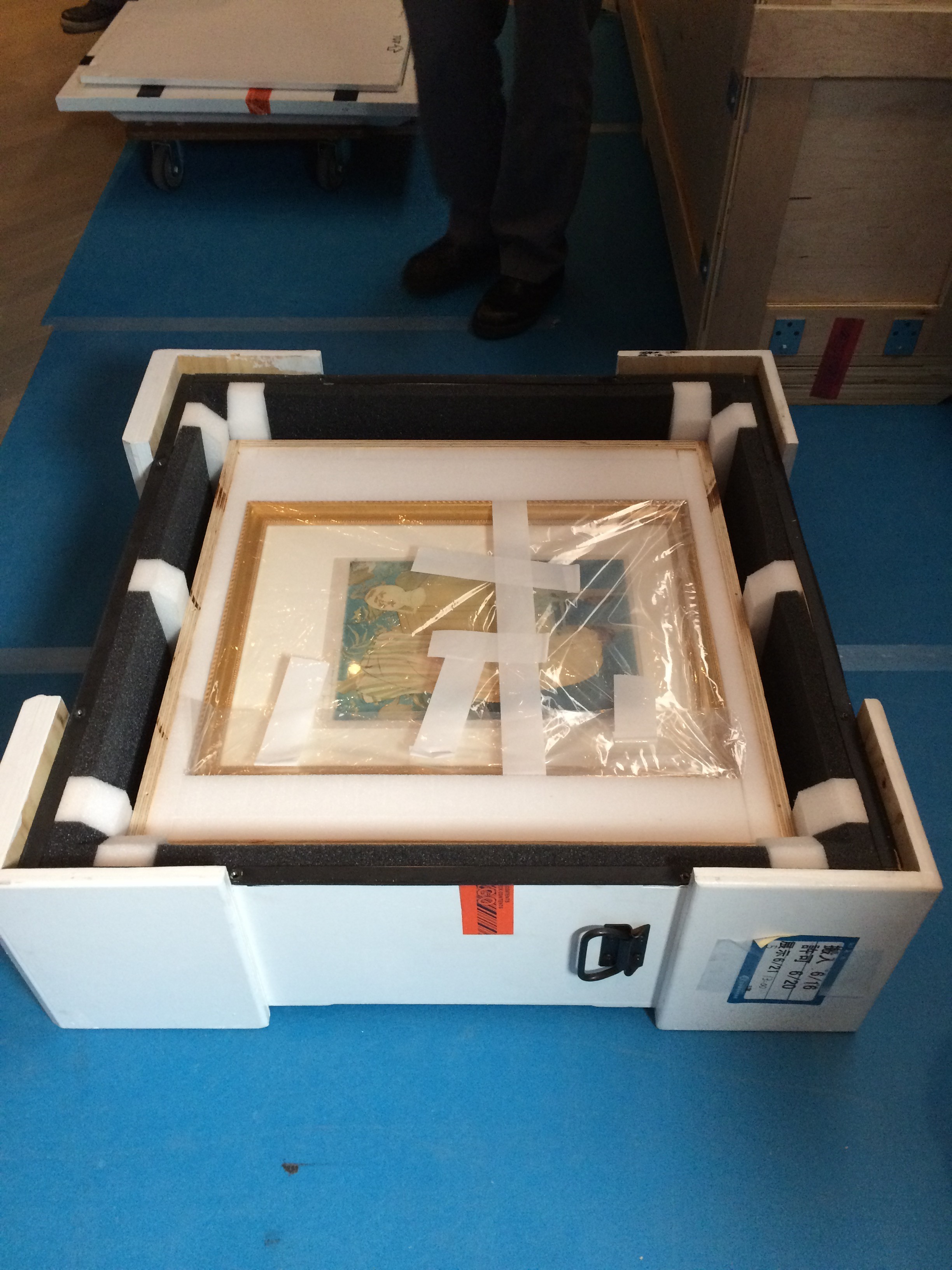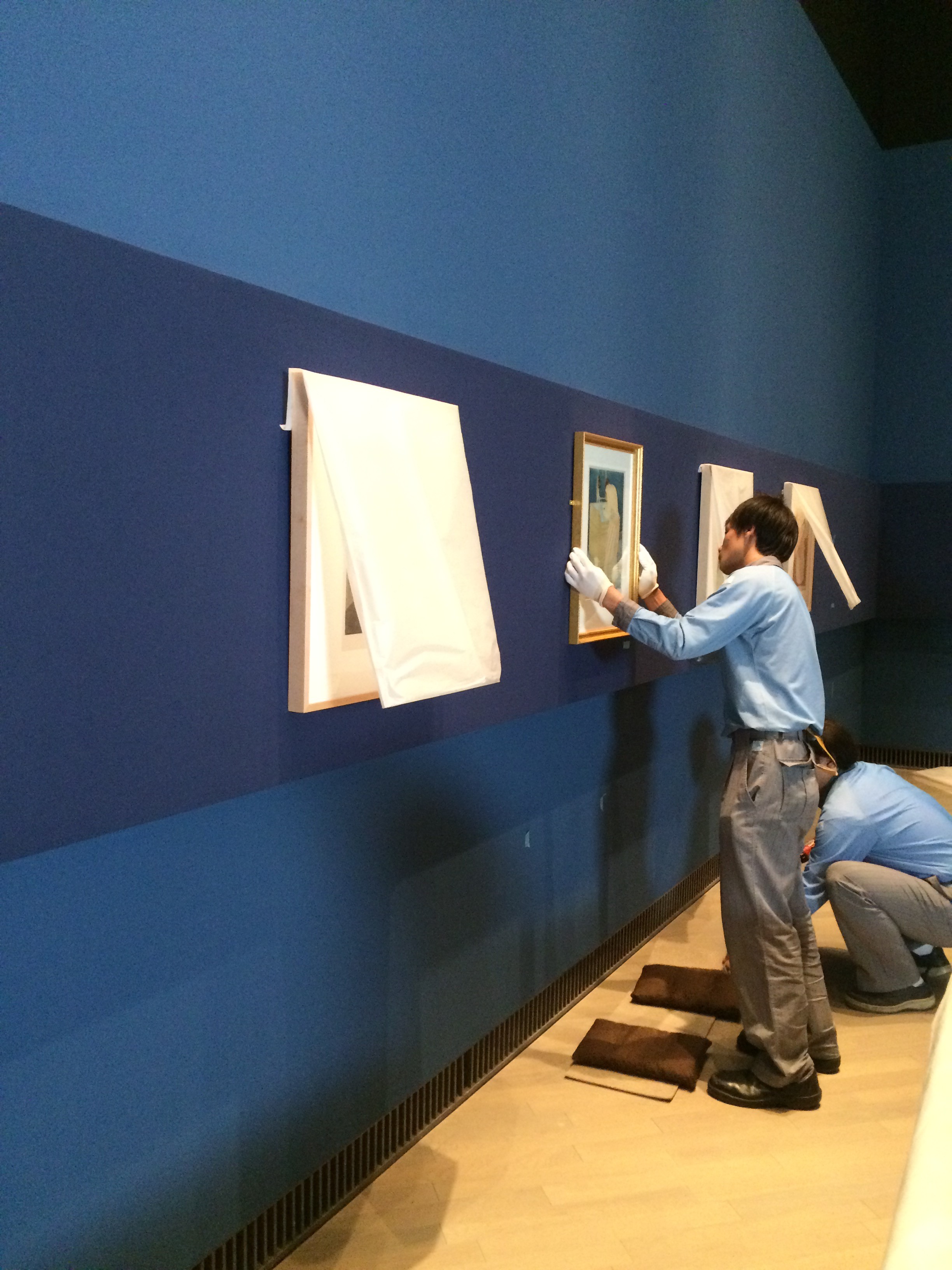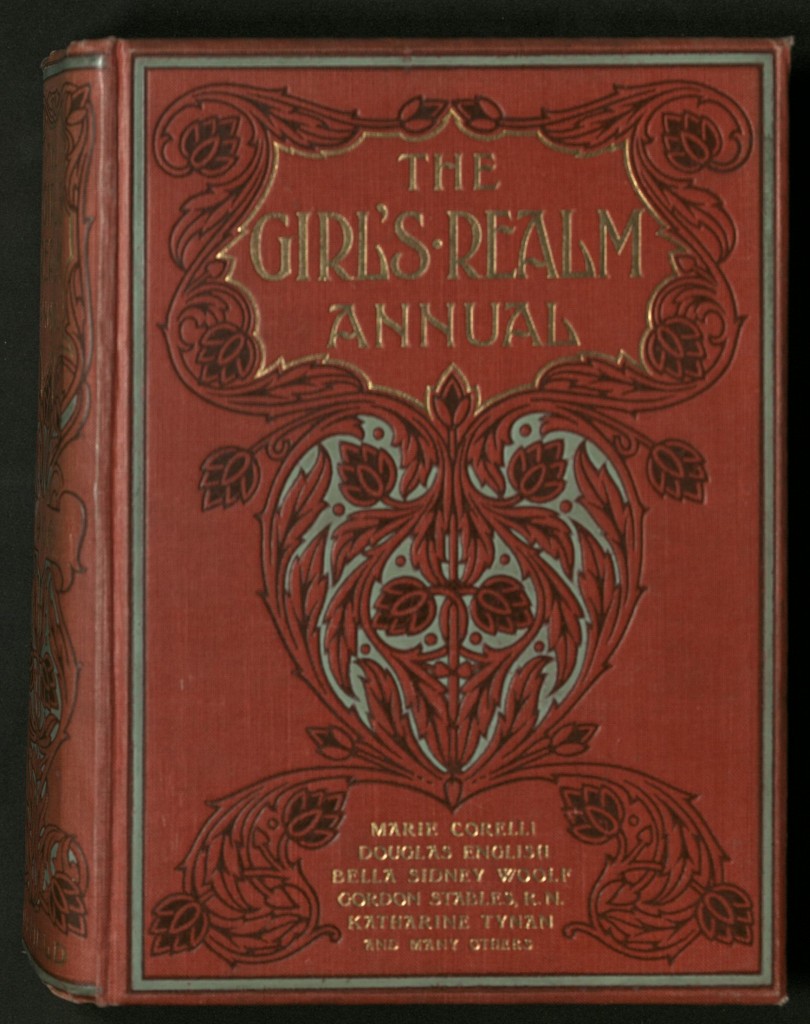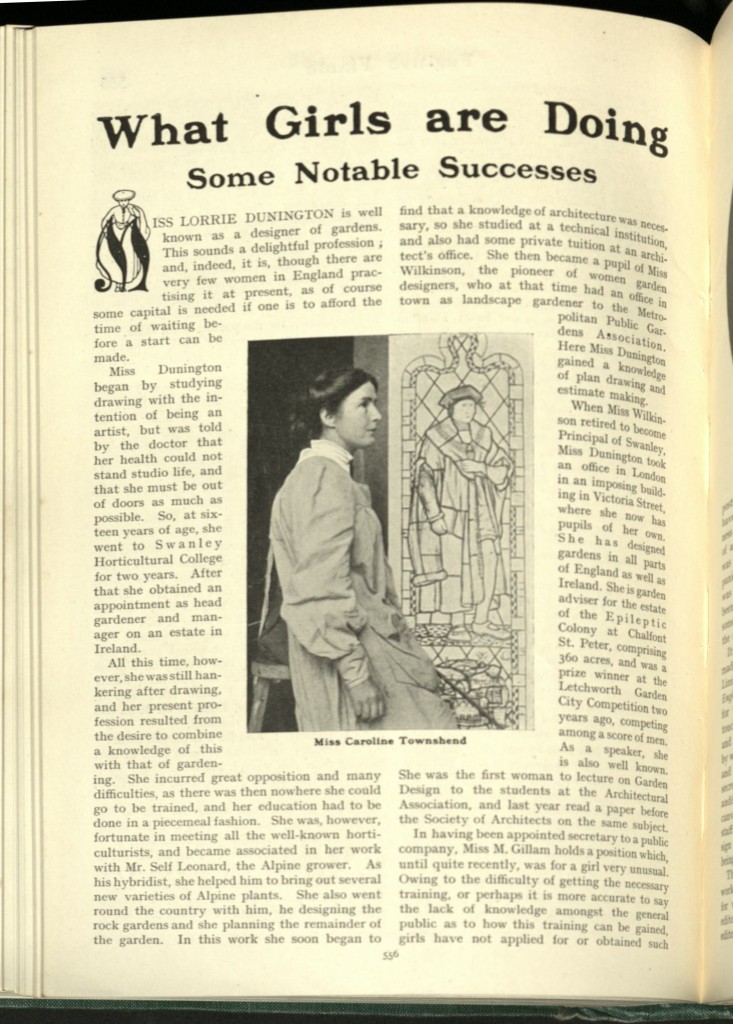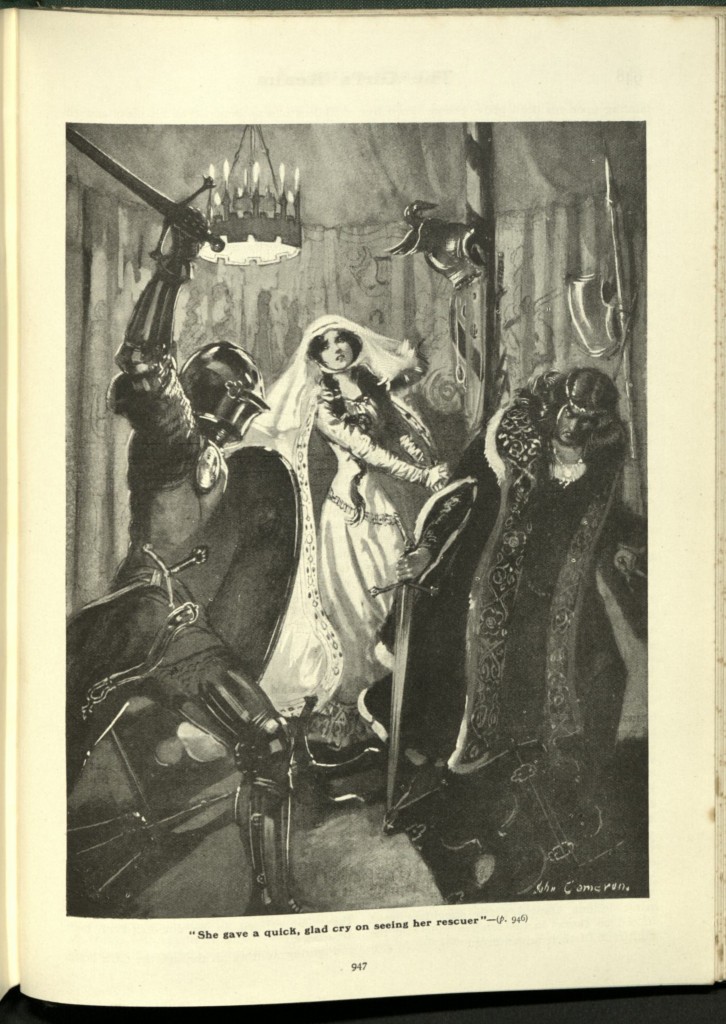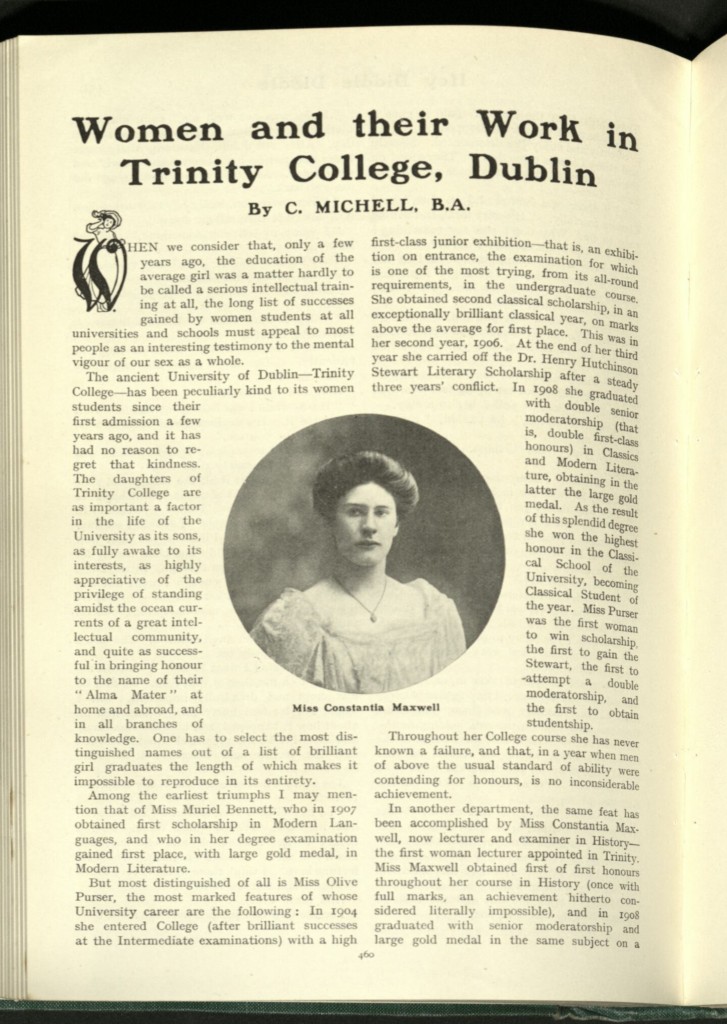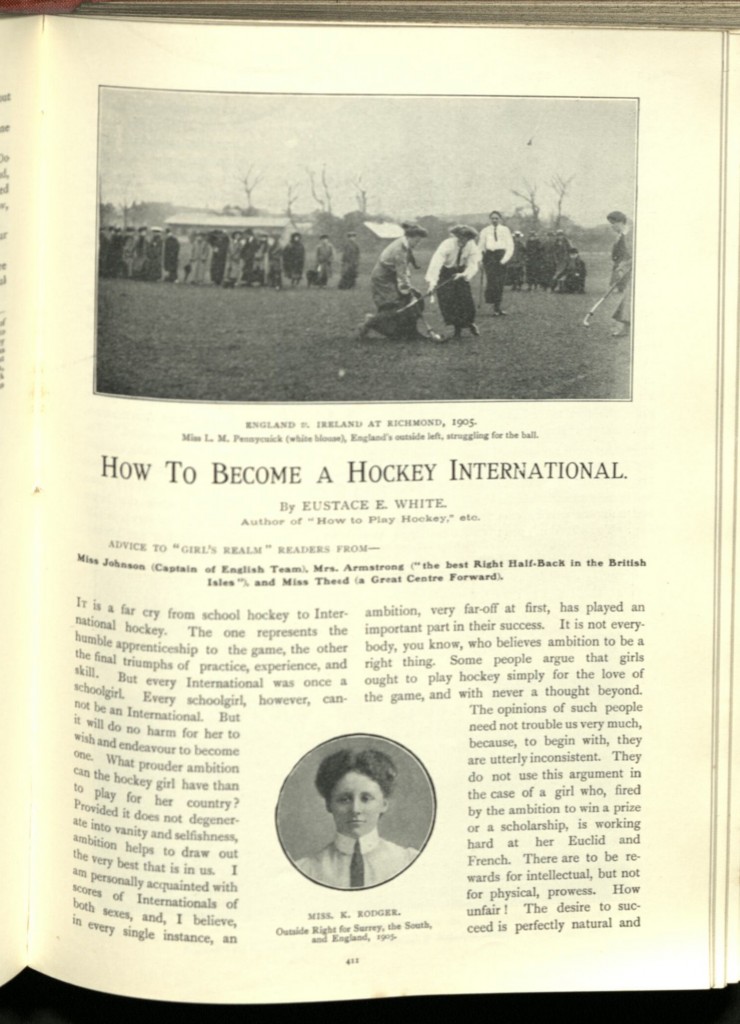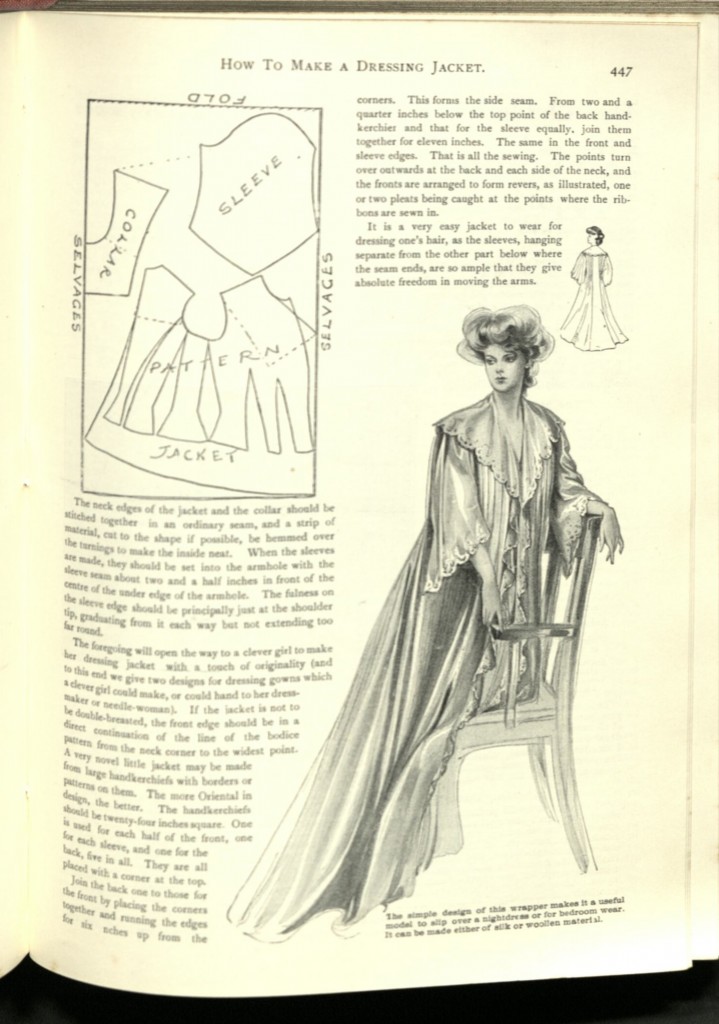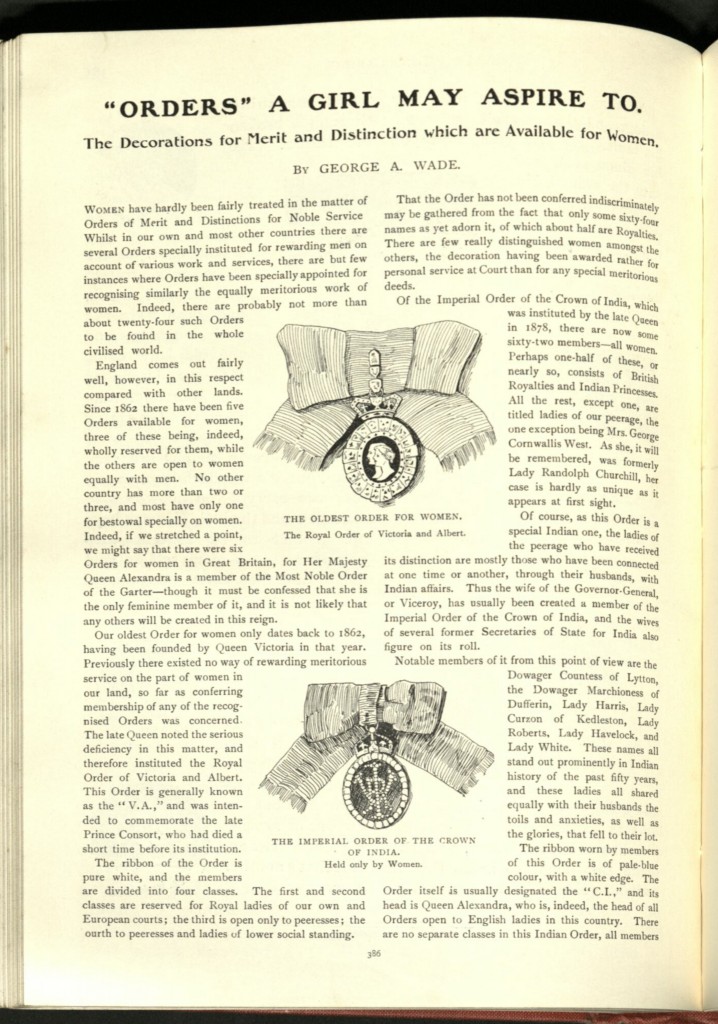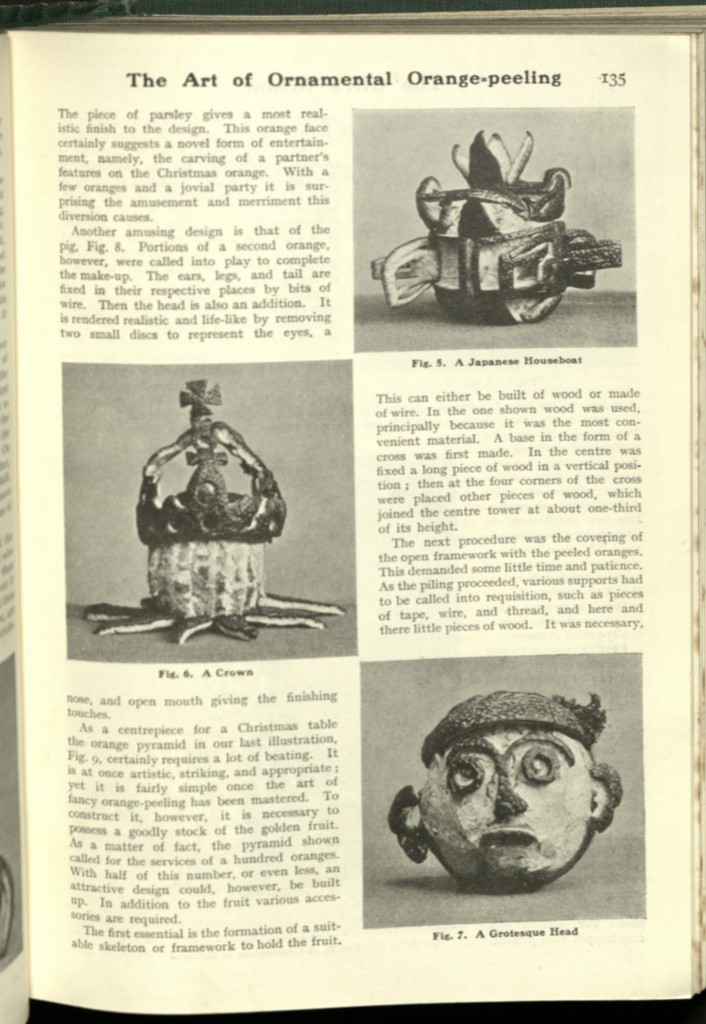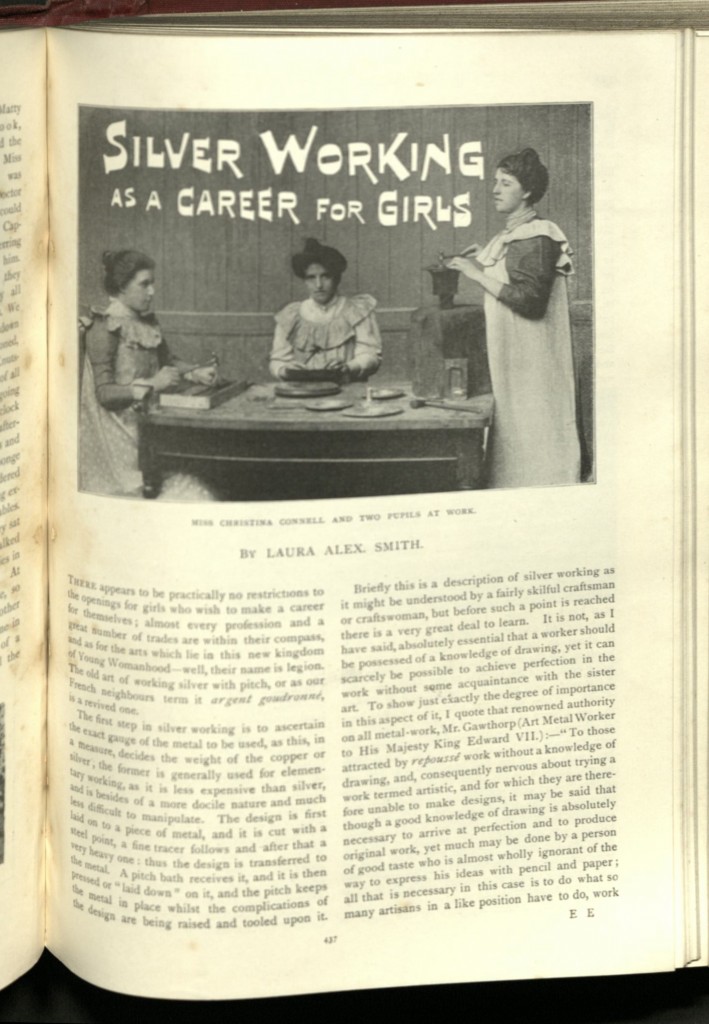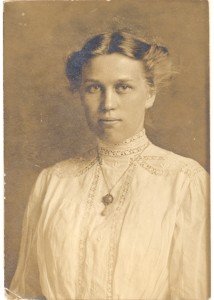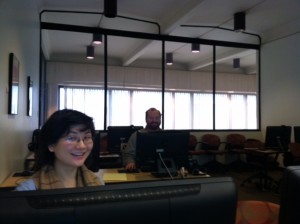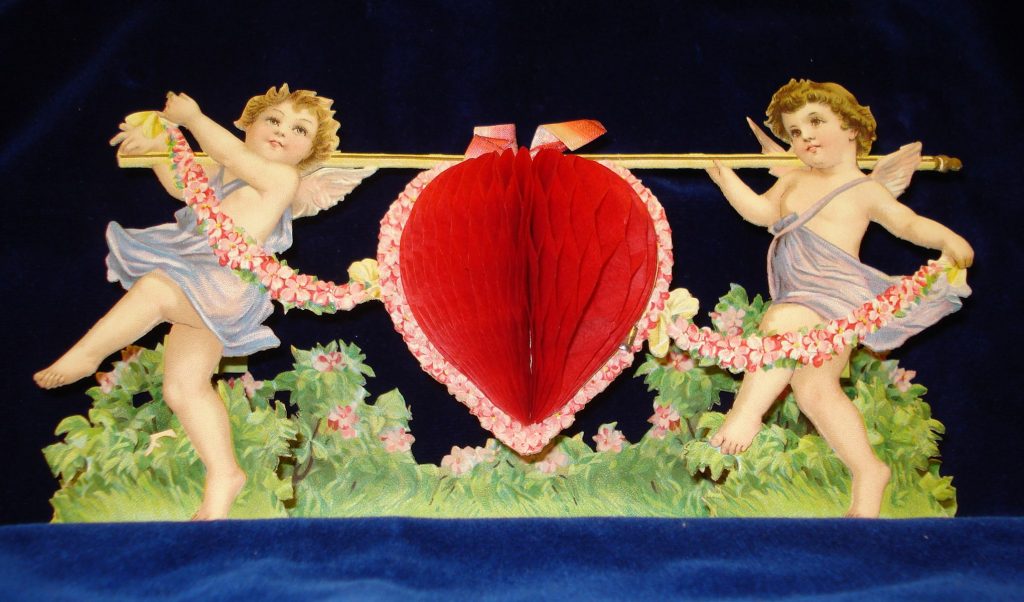 Has Valentine’s Day made you think you should write a love letter? There’s advice on how to do so on the web, but if you would prefer some examples that jump right into the nitty gritty of courting a person you have seen in church but never been introduced to, negotiating class differences, or what to say to a lady when you know she has other suitors, you may want books that have stood the test of time.
Has Valentine’s Day made you think you should write a love letter? There’s advice on how to do so on the web, but if you would prefer some examples that jump right into the nitty gritty of courting a person you have seen in church but never been introduced to, negotiating class differences, or what to say to a lady when you know she has other suitors, you may want books that have stood the test of time.
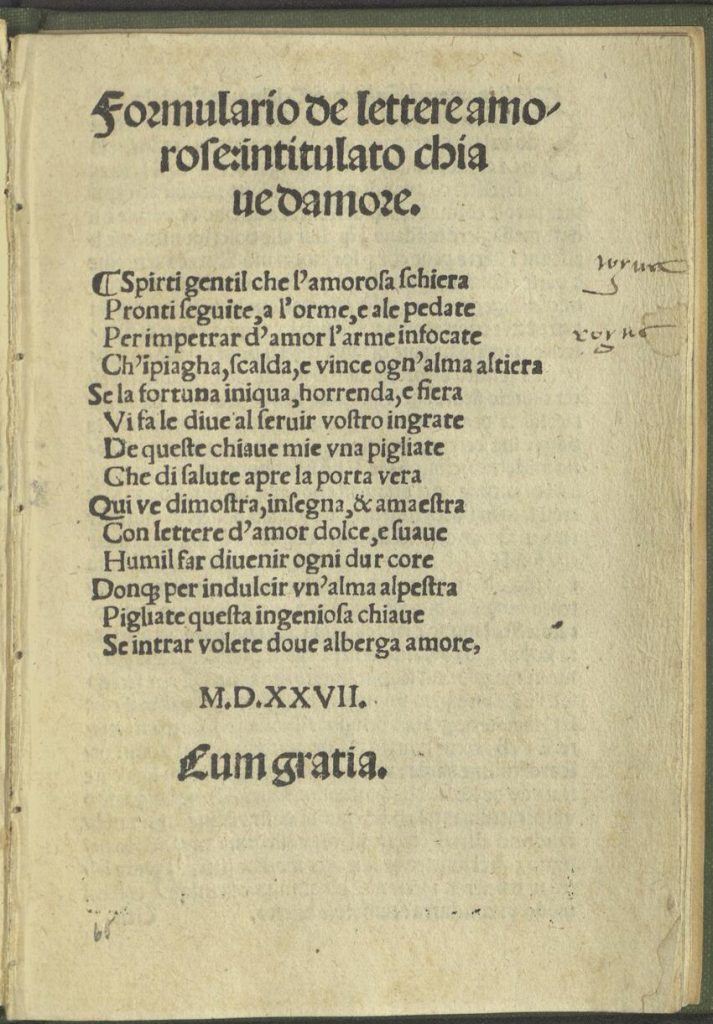 Although we hold a variety of books on writing both personal and business correspondence, we have only three devoted entirely to love letters. The earliest is Formulario de lettere amorose: intitulato chiaue damore – A Formulary of Love Letters, Titled, The Key to Love, 1527. The author, Eustachio Celebrino, was an artist working in the nascent book trade of early 16th-century Italy. Besides providing woodcuts, he hack-wrote a series of short vernacular works on topics that were likely to sell: calligraphy manuals, an introduction to the Turkish language, an essay on women’s cosmetics, medical advice including protecting oneself from the plague and curing syphilis in ten days, and works in verse. Most of the sample letters in his 24-page pamphlet on love letters are adressed by a male lover to a woman: thanking her for her letter, praising her beauty and goodness, asking for a face-to-face meeting. Some are less happy: the woman replies and refuses to consent to his demands, and he writes a “Letter sent to humble an obdurate woman.”
Although we hold a variety of books on writing both personal and business correspondence, we have only three devoted entirely to love letters. The earliest is Formulario de lettere amorose: intitulato chiaue damore – A Formulary of Love Letters, Titled, The Key to Love, 1527. The author, Eustachio Celebrino, was an artist working in the nascent book trade of early 16th-century Italy. Besides providing woodcuts, he hack-wrote a series of short vernacular works on topics that were likely to sell: calligraphy manuals, an introduction to the Turkish language, an essay on women’s cosmetics, medical advice including protecting oneself from the plague and curing syphilis in ten days, and works in verse. Most of the sample letters in his 24-page pamphlet on love letters are adressed by a male lover to a woman: thanking her for her letter, praising her beauty and goodness, asking for a face-to-face meeting. Some are less happy: the woman replies and refuses to consent to his demands, and he writes a “Letter sent to humble an obdurate woman.”
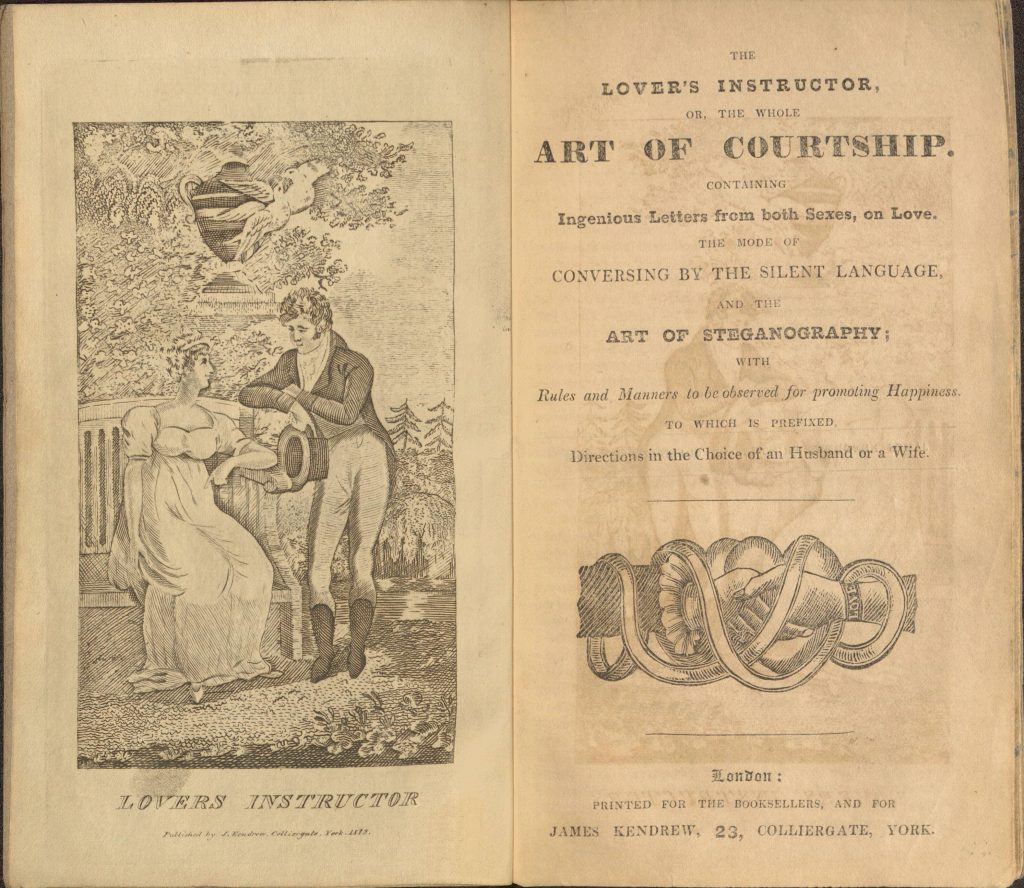 Two hundred eighty-five years later, we have The Lover’s Instructor, or the Whole Art of Courtship (1812). This brief work begins with “Instructions in the choice of an husband” and the opening command is “Before marriage you cannot be too cautious and quick-sighted; nor afterwards too blind to your husband’s failings and imperfections, if he has any.” The next section, on choosing a wife, begins with a paragraph on calculating the likely benefits to the man of business from being linked with the prospective lady’s family and building connections within their alliances.
Two hundred eighty-five years later, we have The Lover’s Instructor, or the Whole Art of Courtship (1812). This brief work begins with “Instructions in the choice of an husband” and the opening command is “Before marriage you cannot be too cautious and quick-sighted; nor afterwards too blind to your husband’s failings and imperfections, if he has any.” The next section, on choosing a wife, begins with a paragraph on calculating the likely benefits to the man of business from being linked with the prospective lady’s family and building connections within their alliances.
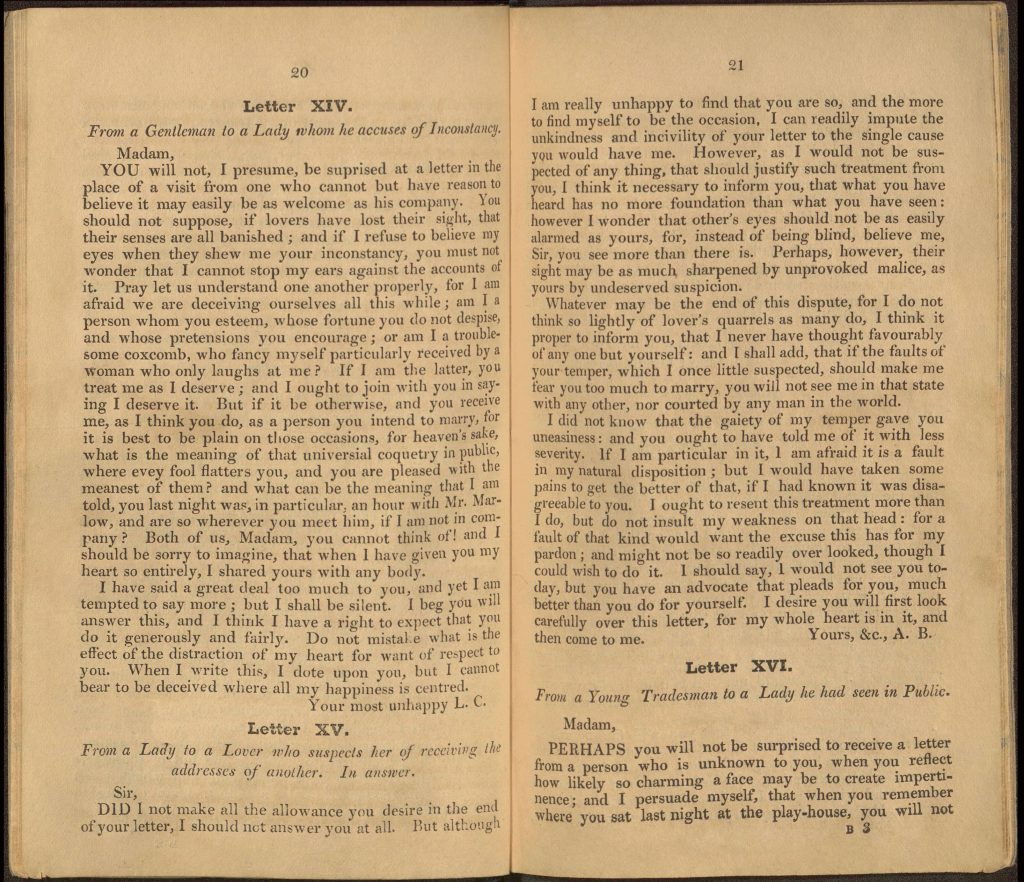 Most of the book is made up of sample letters; a few descriptions will hint at the breadth of topics covered: An assurance of love. From a Young Person in business to a Gentleman, desiring leave to wait on his Daughter. From a Daughter to a Mother on the same occasion. From a Young Lady to a Gentleman that courted her, whom she could not like, but was forced by her parents to receive his Visits and think of none else for her Husband (“I was obliged to an ambiguous behaviour, and durst not reveal myself further, because my mother, from a closet near the place were we sat, could both hear and see our conversation.”) From a Young Tradesman to a Lady he had seen in Public. Nancy to George – Flat Denial. William at Sea to Sally onshore.
Most of the book is made up of sample letters; a few descriptions will hint at the breadth of topics covered: An assurance of love. From a Young Person in business to a Gentleman, desiring leave to wait on his Daughter. From a Daughter to a Mother on the same occasion. From a Young Lady to a Gentleman that courted her, whom she could not like, but was forced by her parents to receive his Visits and think of none else for her Husband (“I was obliged to an ambiguous behaviour, and durst not reveal myself further, because my mother, from a closet near the place were we sat, could both hear and see our conversation.”) From a Young Tradesman to a Lady he had seen in Public. Nancy to George – Flat Denial. William at Sea to Sally onshore.
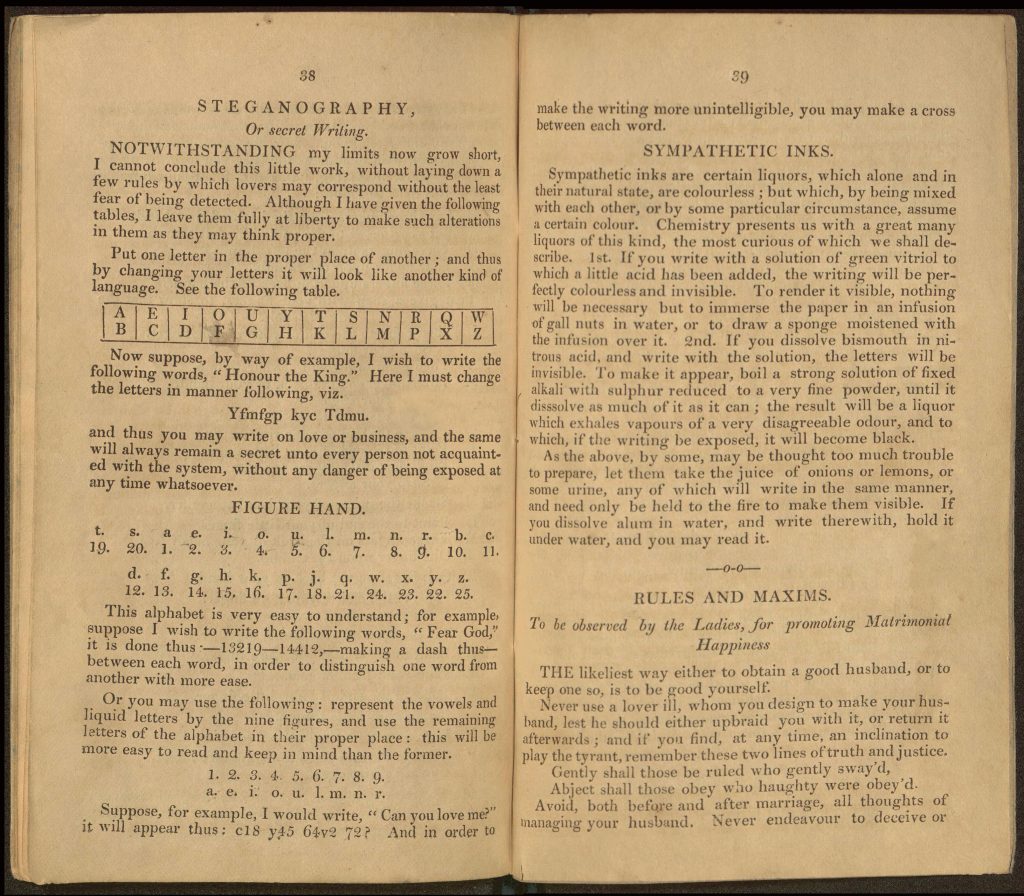 After thirty pages of these middle class Regency concerns, the book suddenly plunges into a variety of methods by which lovers may communicate secretly. The most complex is a sort of finger signing to silently spell whatever one wants to communicate. An introduction to substitution ciphers and a short description of invisible inks follows.
After thirty pages of these middle class Regency concerns, the book suddenly plunges into a variety of methods by which lovers may communicate secretly. The most complex is a sort of finger signing to silently spell whatever one wants to communicate. An introduction to substitution ciphers and a short description of invisible inks follows.
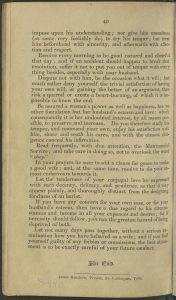 The last two pages are devoted to rules “to be observed by the Ladies, for promoting Matrimonial Happiness,” emphasizing obedience, good nature, and sincere and constant attempts at improving one’s future conduct.
The last two pages are devoted to rules “to be observed by the Ladies, for promoting Matrimonial Happiness,” emphasizing obedience, good nature, and sincere and constant attempts at improving one’s future conduct.
You can read our copy of The Lover’s Instructor on the Internet Archive at https://archive.org/details/lovers-instructor-kendrew-1812.
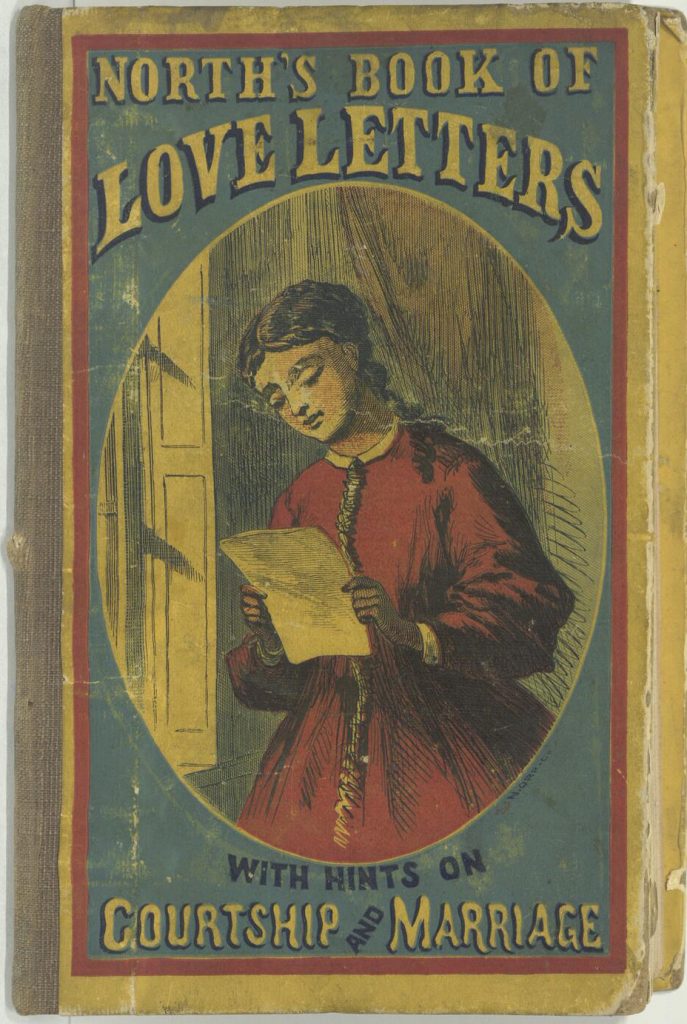 North’s Book of Love Letters was published in 1867 and reflects the growing genre of self-help or autodidactic books. The publisher advertises other “Good Books” offering instruction in ballroom dance, horse taming, shorthand writing, household “receipts,” etiquette, card tricks, billiards, self-defense, and playing the banjo.
North’s Book of Love Letters was published in 1867 and reflects the growing genre of self-help or autodidactic books. The publisher advertises other “Good Books” offering instruction in ballroom dance, horse taming, shorthand writing, household “receipts,” etiquette, card tricks, billiards, self-defense, and playing the banjo.
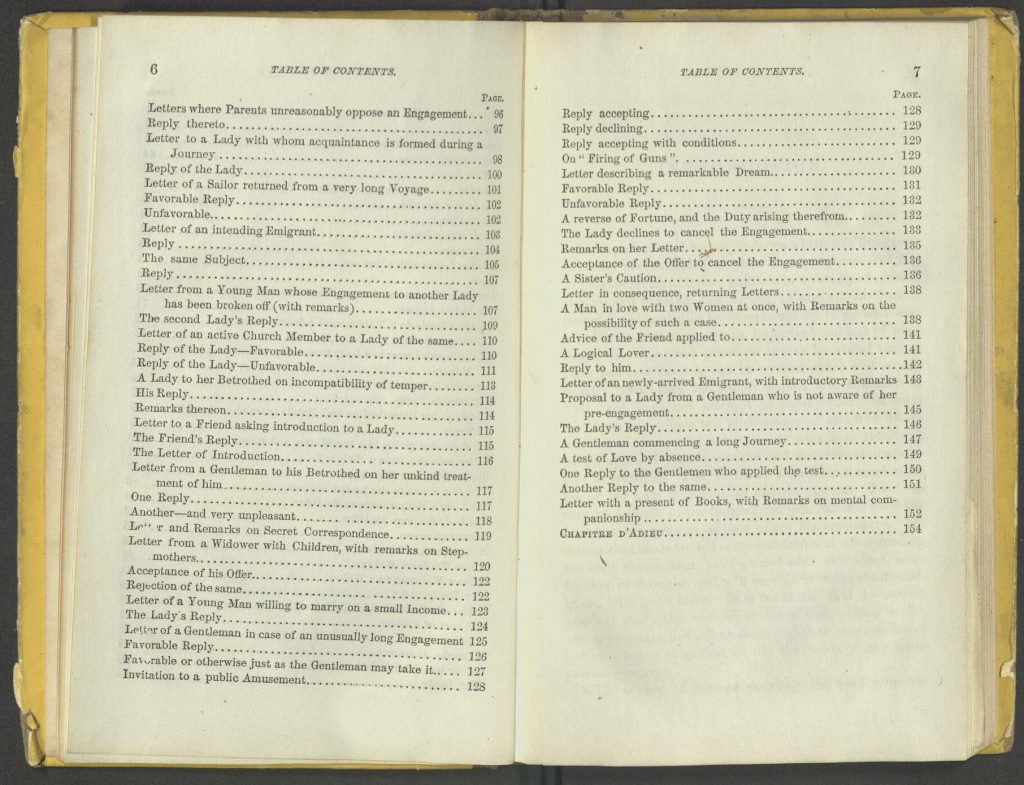 The volume on love letters Includes 140 specimen letters “suitable for lovers of any age and condition… the whole forming a convenient hand-book of valuable information for the use of those who need friendly guidance and advice in matters of love, courtship and marriage.” After introductory chapters on confidentiality, mutual respect (“one of the most graceful accompaniments of courtship”), the responsibilities of marriage, the approval of parents (“where practicable, it should always be sought”), and secret marriages (“as a rule.. very objectionable”), we come to the letters.
The volume on love letters Includes 140 specimen letters “suitable for lovers of any age and condition… the whole forming a convenient hand-book of valuable information for the use of those who need friendly guidance and advice in matters of love, courtship and marriage.” After introductory chapters on confidentiality, mutual respect (“one of the most graceful accompaniments of courtship”), the responsibilities of marriage, the approval of parents (“where practicable, it should always be sought”), and secret marriages (“as a rule.. very objectionable”), we come to the letters.
With more than a hundred pages to fill, these include a wide variety of circumstances, letters and their answers, paired positive and negative responses depending on the feelings of one of the partners, and editorial commentary. The writers include a young gentleman, a middle-aged gentleman (to a lady the same), a soldier ordered to active service, a rejected suitor, a lover who will not take “no”, etc. There are letters to a desired lady with whom the gentleman has religious differences, from gentlemen introduced at a ball, and to ladies with whom one became acquainted during a journey. Most of the correspondence originates with men, but some in initiated by women (“A Lady to Her Inconstant Lover”, etc.)
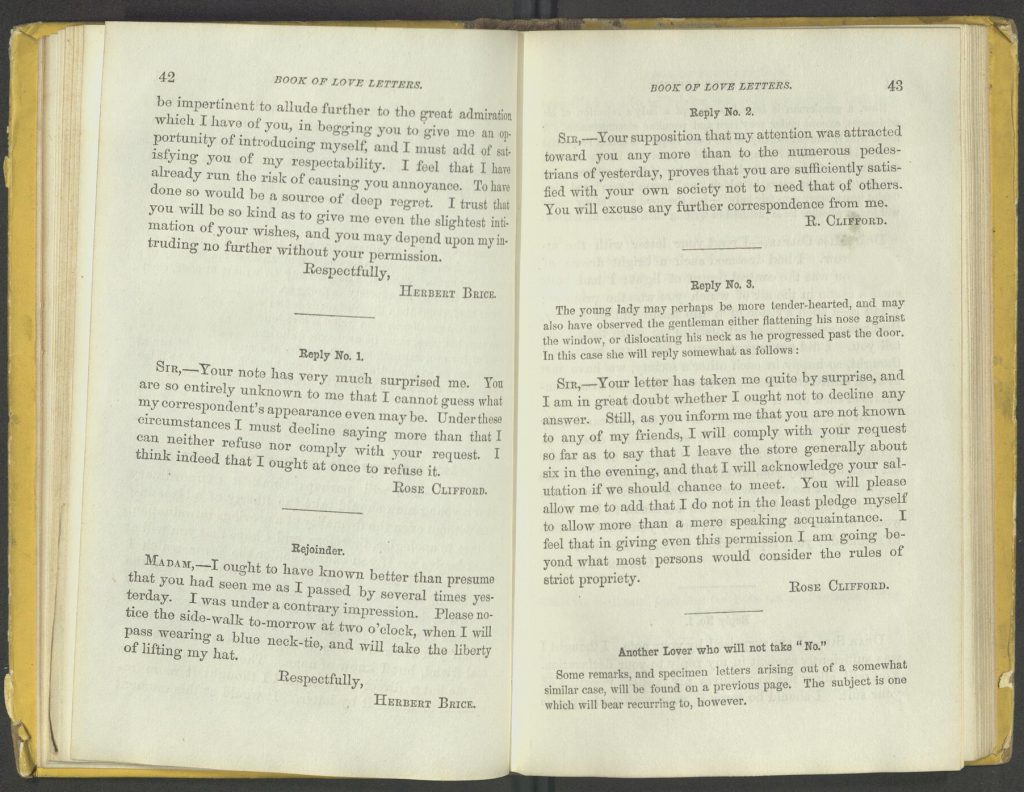 One of my favorite exchanges begins with a man who writes a lady who works in a shop: “I cannot explain to you how great a desire I feel that I should enjoy the very great pleasure of your acquaintance.” After acknowledging that they have no shared friends to introduce them, he asks if he may introduce himself. The lady’s first reply neither rejects nor accepts the offer, on the grounds that she has no idea who he is. He writes back that he thought she might have noticed him walking back and forth in front of the window, and proposes to raise his hat to her the next day . In alternative replies the lady either agree to say acknowledge his greeting if she sees him when she leaves the shop at six in the evening or sharply and humorously states that she wants nothing to do with him.
One of my favorite exchanges begins with a man who writes a lady who works in a shop: “I cannot explain to you how great a desire I feel that I should enjoy the very great pleasure of your acquaintance.” After acknowledging that they have no shared friends to introduce them, he asks if he may introduce himself. The lady’s first reply neither rejects nor accepts the offer, on the grounds that she has no idea who he is. He writes back that he thought she might have noticed him walking back and forth in front of the window, and proposes to raise his hat to her the next day . In alternative replies the lady either agree to say acknowledge his greeting if she sees him when she leaves the shop at six in the evening or sharply and humorously states that she wants nothing to do with him.
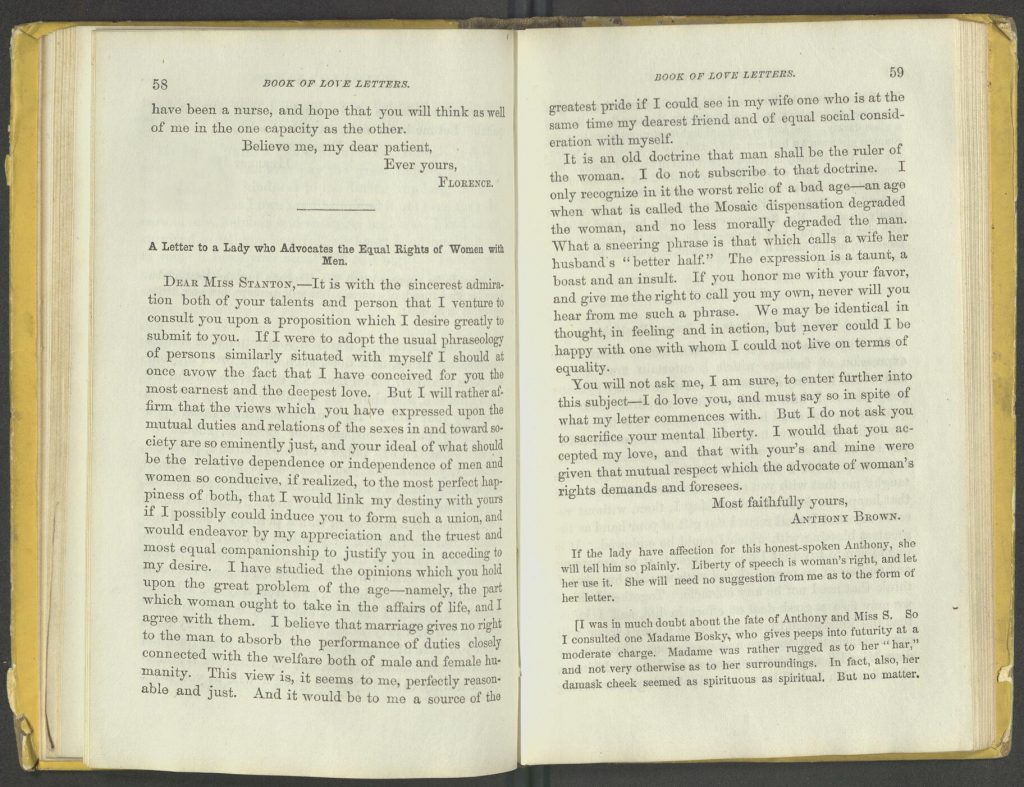 Another favorite is a letter addressed to a “Lady who Advocates the Equal Right of Women with Men” by a gentleman who says he agrees with her. This is followed by editorial snark, but at least the possibility of equality is broached.
Another favorite is a letter addressed to a “Lady who Advocates the Equal Right of Women with Men” by a gentleman who says he agrees with her. This is followed by editorial snark, but at least the possibility of equality is broached.
With these examples to hand, you will surely have the confidence to write that special someone. We wish you all possible success in your amatory correspondence!
Celebrino, Eustachio. Formulario de lettere amorose: intitulato chiaue damore. Venetia: Francesco Bindoni & Mapheo Pasyni, 1527
The lover’s instructor; or, the whole art of courtship; containing ingenious letters from both sexes, on love, &c., the mode of conversing by the silent language, and the art of steganography; with rules and manners to be observed for promoting happiness, to which is prefixed directions in the choice of a husband and a wife. London & York: J. Kendrew, 1812
North, Ingoldsby. North’s Book of Love Letters. With directions how to write and when to use them, and one hundred and forty specimen letters, suitable for lovers of any age and condition.... New York, Dick and Fitzgerald, 1867

